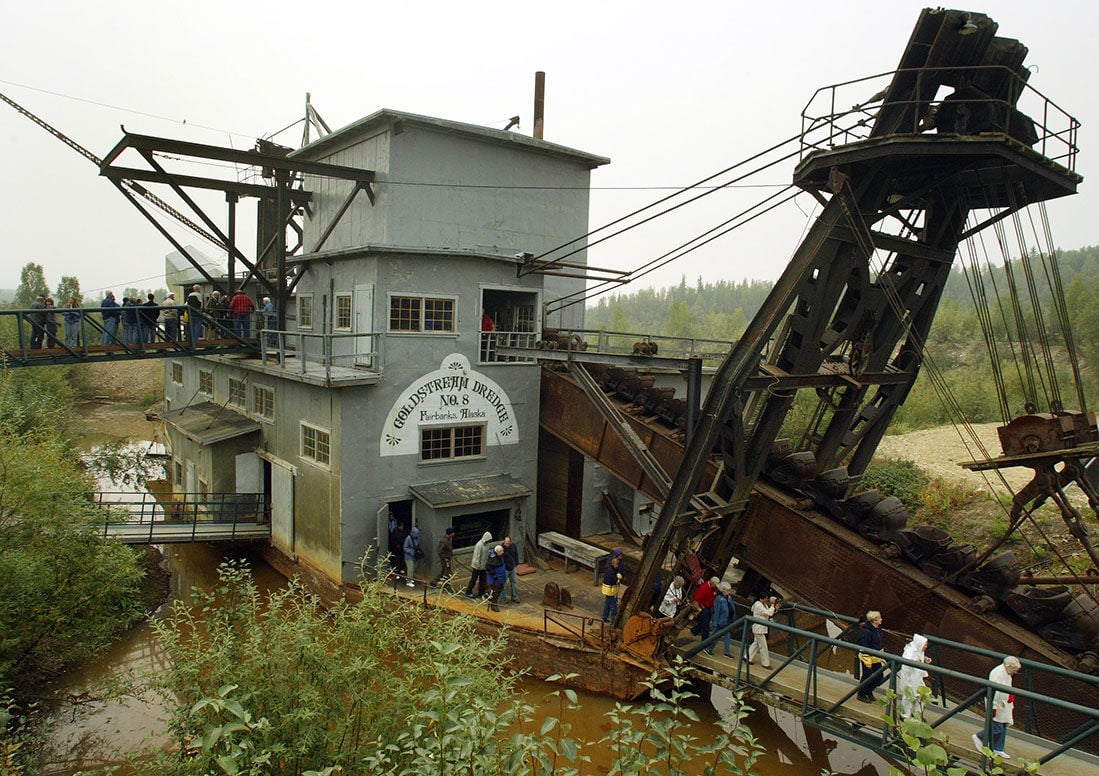
The dredges are held in place by spuds that're driven into the bed of the pond, and act as a pivot point around which the dredge rotates, to let the dredge scoop out in an arc. Like monitors, the pond's water thaws the ground. The pond the dredge floats in extends the mining season, as anything underwater would be by definition thawed, so scooping paydirt from underwater results in scooping thawed pay, even when the pond is iced over, until it gets frozen deep, it could be workable. Most of the dredges were barges built on top of pontoons. A large dredge could process as much dirt in a minute as a mining crew of three could in a day. In the 80s, it became profitable again, but by the 90s the price of gold had fallen, so the dredges again died out. About a century ago, it was profitable to run dredges, but then it became less so, so dredges died out.

14,500 cu-yd of paydirt could be processed per day by a big dredge, scooped by bucket line, washed in an internal wash plant, caught in an internal sluice box system, with tailings dumped out the back on a conveyor.

They were in great use for a half century before that.

Prior to Tony's attempt, no industrial floating dredge had been used in the Klondike for a quarter century. It scoops or pumps/vacuums the bottom of the watercourse and pushes it onto the wash plant.įloating industrial dredges had been used in the Klondike for a long time, since 1901. A dredge is a piece of mining equipment used on watercourses.


 0 kommentar(er)
0 kommentar(er)
